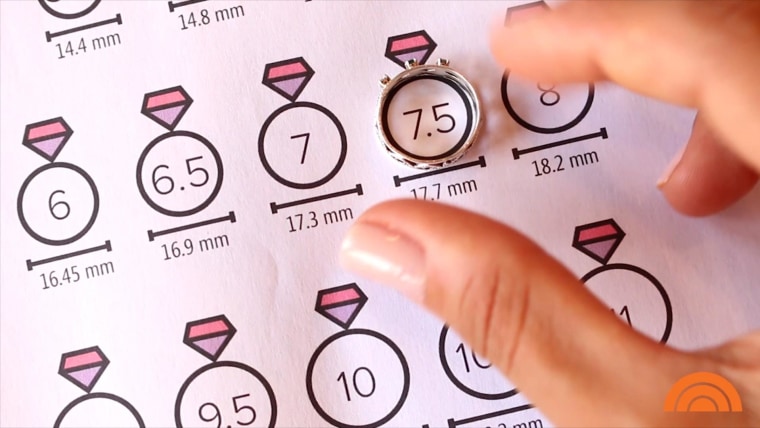Table of Contents
Introduction
So, you’ve found that perfect ring, but the big question remains: Will it fit? Fear not, because understanding ring sizes is easier than you might think. In this comprehensive guide, we’ll walk you through everything you need to know about ring size charts, ensuring that your next jewelry purchase fits like a dream.
What is a Ring Size Chart?
The Basics
Before we dive in, let’s cover the basics. A ring size chart is a handy tool that helps you determine the perfect size for your ring. It typically consists of a series of numbers or letters that correspond to specific measurements, allowing you to find the ideal fit for your finger.
Understanding Ring Sizes
Ring sizes are measured using a standardized scale, with each size representing the circumference of your finger in millimeters. For example, a size 7 ring has a circumference of approximately 54.4mm.
How to Measure Your Ring Size
DIY Methods
There are several methods you can use to measure your ring size at home. One common approach involves wrapping a piece of string or paper around your finger and then measuring the circumference with a ruler. Another option is to use a printable ring sizer, which you can find online for free.
Professional Measurements
If you prefer a more accurate measurement, consider visiting a jeweler. They have specialized tools, such as ring sizers and mandrels, that can provide precise measurements. Plus, they can offer expert advice on finding the perfect fit for your ring.
Factors Affecting Ring Size
Temperature and Weather
Believe it or not, the temperature can affect the size of your fingers. In colder weather, your fingers may shrink slightly, while they can swell in hot and humid conditions. Keep this in mind when measuring your ring size, especially if you live in an area with extreme temperatures.
Time of Day
Similarly, your fingers can fluctuate in size throughout the day. They tend to be slightly larger in the evening compared to the morning. For the most accurate measurement, lab grown diamonds, try measuring your ring size at different times of the day to account for these variations.
Common Ring Size Chart Systems
US Ring Size Chart
The most common ring size chart system used in the United States is based on numerical sizes ranging from 3 to 13. Half sizes are also available for a more precise fit.
UK Ring Size Chart
In the United Kingdom, ring sizes are typically measured using letters of the alphabet, ranging from A to Z. Each letter corresponds to a specific circumference measurement.
European Ring Size Chart
European ring sizes are measured using a numerical scale similar to the US system. However, the sizing increments may vary slightly, so it’s essential to refer to a conversion chart if you’re shopping internationally.
Tips for Finding the Right Fit
Consider the Ring Style
The style of the ring can also impact the fit. For example, wide bands may feel tighter than narrow ones, so you may need to go up a half size for added comfort.
Test Different Sizes
If you’re unsure about your ring size, don’t be afraid to try on multiple sizes to see which one feels best. Remember, the goal is to find a size that feels comfortable and secure on your finger.
Conclusion
And there you have it—a comprehensive guide to ring size charts. Armed with this knowledge, you can confidently shop for rings knowing that you’ll find the perfect fit every time. Whether you’re treating yourself or buying a gift for someone special, understanding ring sizes is the key to a successful jewelry purchase. So go ahead, indulge in that beautiful ring—you deserve it!
